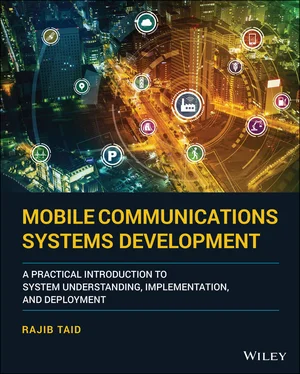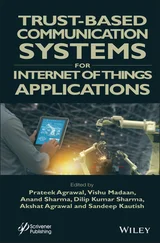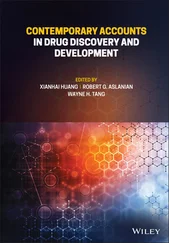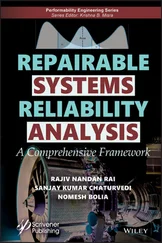Initiation of Handover of LTE IMS Voice Call (VoLTE)
SRVCC works by performing the handover of the ongoing VoLTE call as well as data session over IMS to the legacy GERAN/UTRAN network. Initiation of a handover operation works the same way as the normal handover procedure based on the signal‐level measurement reports reported from the UE to the E‐UTRAN. The source eNodeB sends the HANDOVER REQUIRED message, refer to TS 36.413 [97], to the MME with the SRVCC HO Indication IE for a handover of the existing VoLTE call. SRVCC HO Indication may be PS or PS and CS type. MME, in turn, initiates the SRVCC request to the MSC server. The MSC server prepares and executes the handover of the IMS voice call successfully. For further illustrations of the VoLTE call handover through the SRVCC method, refer to Figures 4.2.2‐1 and 4.2.3‐1, TS 23.216 [35].
Handover of PS Call/Data Session
The handover of an ongoing PS call during an SRVCC procedure is performed as usual as per the normal inter‐RAT handover procedures. For further illustrations of the inter‐RAT handover procedures, refer to Section 5.2.2TS 23.401 [39].
6.2.3 Interworking for Voice Call Through LTE/EPS: CSFB
In this interworking scenario, the provision for making a voice call for a UE registered with an LTE network is facilitated through the reuse of the legacy GERAN/UTRAN. The provision for making a voice call by an LTE/EPS registered UE through the legacy GERAN/UTRAN is known as the CSFB method; refer to TS 23.272 [38]. One such illustration of the interworking of network elements for CSFB arrangement is shown in Figure 6.8. A CSFB feature may be used by:

Figure 6.8 Illustration: legacy and LTE network interworking for CSFB.
An MO or MT LTE UE that does not have the voice‐over IMS or VoLTE capability
Other scenarios such as VoLTE‐capable UE that fails to register in the IMS.
Unlike the interworking scenarios for VoLTE call as mentioned in Sections 6.2.1and 6.2.2, no IMS is deployed and interworked as part of the LTE/EPS network with the CSFB arrangement. In this interworking scenario with CSFB arrangement, the LTE/EPS network provides only data services to subscribers.
During a CSFB of a CS call, the ongoing PS session may be also transferred to the legacy network through PS HO procedure with reduced data rates. For the CSFB purpose, a new logical interface called SGs is configured between the MME and MSC/Visitor Location Register (VLR) to exchange signaling information only. The SGs logical interface also supports mobility management as well as MO/MT call establishment procedures. For more information on the CSFB, a protocol stack, and procedures supported over the SGs, refer to TS 23.272 [38] and TS 29.118 [68]. SGs interface uses the SCTP [17] layer and IP transport network. The SGs interface is similar to the GPRS/UMTS Gs interface that connects the SGSN and the MSC to provide CS domain services to MS engaged in a PS service.
Example 6.2below describes the status displayed by an LTE/EPS registered UE while making a voice call through the legacy GERAN/UTRAN using the CSFB method.
How does a CSFB work?
Indication of CSFB Feature Support
A UE indicates its CSFB feature support capability under the UE Network Capability Mandatory IE in the ATTACH Request message that is sent to the MME. The UE specifies the Attach Type as the combined EPS/IMSI Attach Request under the EPS attach type IE. A combined EPS/IMSI ATTACH Request from the UE enables the MME to update the UE location in the MSC/VLR end also over the SGs interface. Refer to TS 23.272 [38] for further details on the EMM procedures supported over the SGs interface. If the EPC network supports the CSFB feature, the same will be informed to the UE in the ATTACH ACCEPT, TS 24.301 [46], message through the IE Attach Result = combined EPS/IMSI attach and Additional update result optional IE. This IE will carry the value “CS Fallback not preferred” toward the UE, indicating that it can use the CSFB method to initiate a CS call through the legacy 2G/3G network. The same IE indicating the supporting of the CSFB feature can be also sent in a TAU ACCEPT message, TS 24.301 [46], from the MME to UE.
Initiation of CS Call Through the CSFB Method by the UE
An LTE UE initiates a CS call through the CSFB method by sending the EMM/NAS EXTENDED SERVICE REQUEST message to the MME.
This message can be used to establish an MO or MT CS call through CSFB by indicating the same in the Service type mandatory IE; refer to Section 9.9.3.27, TS 24.301 [46]. Any existing Radio Resource Control (RRC) connection will be released by the E‐UTRAN by sending the RRCConnectionRelease, TS36.331 [94], message to the UE with
Example 6.2CSFB: LTE UE Fall‐back to CS domain for voice call
Assume that a mobile user currently subscribes to a subscription plan consisting of LTE (4G) data along with voice call services provided by an operator. The UE will perform a combined attach, EPS as well as IMSI, procedure with the LTE/EPS network. Also, consider that the operator ’ s LTE/EPS network does not have the IMS facility currently to provide voice‐over LTE services to subscribers. The UE may display the type of network, i.e. 4G, which is currently registered with, at the top corner of the handset. Whenever the user attempts to make a voice call or an incoming call arrives for the user, the UE will fall back to either 2G or 3G network which will be shown at the top corner of the handset. Once the voice call completes, the UE will return to and access the LTE/EPS network and registers with it again, showing the 4G status at the top corner of the handset.
“releaseCause = cs‐FallbackHighPriority” for CS fallback to UTRAN or
“releaseCause = other” for CS fallback to GERAN.
CSFB method works on the redirection concept where LTE UE is redirected to the target ARFCN of the legacy network. For redirection purposes, the RRCConnectionRelease message will also include the redirectedCarrierInfo IE containing the following information for CSFB:
RAT/RAN, i.e. GERAN, UTRAN, and E‐UTRAN, to be redirected.
Corresponding Carrier Frequency, also called ARFCN, to be used by the UE.
For the various options of RATs that are allowed for CSFB purposes, refer to TS 36.331 [94]. The UE tunes to the indicated carrier frequency/ARFCN of the legacy network. To make a CS voice call, UE will start exchanging normal air interface Layer 3 signaling messages with the network as illustrated earlier in Section 2.2.5.
Example 6.3below describes and illustrates the typical signaling messages flows during a mobile originated voice call made by an LTE/EPS registered UE through the legacy GERAN/UTRAN using the CSFB method.
Example 6.3LTE Voice Call Through GSM Network and CSFB Feature
Figure 6.9illustrates the MO and MT voice CS call scenario made by LTE UEs currently registered in the LTE/EPS network and shows only the important call flows from the CSFB point of view. The dotted line indicates the absence of the associated call flows, which are not shown in this figure.
Assume that the MO UE is engaged in a PS session and the MT UE is currently in the idle condition shown by its current state ECM‐IDLE. Note that notification for an incoming CS call to MT UE depends on its current state. If the MT UE is currently in the
ECM‐IDLE state, MME notifies an incoming CS call by sending a paging message to the UE.
Читать дальше













